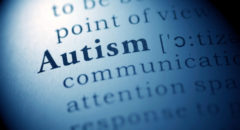
A new study may allay concerns that strenuous exercise could up the risk for developing amyotrophic lateral sclerosis (ALS), an incurable neurological disease that Blacks often see a delay of diagnosis in.
No evidence of rising ALS risk was seen among adults who routinely work up a sweat by playing team sports or engaging in heavy gym workouts. Nor was increased ALS risk associated with less intense leisure activities, such as running, biking or walking.
But investigators did observe that strenuous physical activity on the job was linked to higher ALS risk.
"Heavy exercise at work was associated with a double risk [for] developing ALS," study lead author Dr. Angela Rosenbohm says.
The team stressed that their research does not prove that intense labor causes ALS. Other factors could be in play, they note, including on-the-job exposure to harmful chemicals and pollution, or the long-term impact of performing repetitive motions that typify certain professions.
RELATED: Diets That Lower Brain Iron Could Keep You Sharp
ALS is often called Lou Gehrig's disease in memory of the baseball legend who died of it. The average life span is two to five years after diagnosis, and those with the rare disease lose the ability to initiate and control normal movements.
On-the-job activity was characterized as either light, including those engaged in desk jobs and/or driving; moderate, such as typical of salesmen or mechanics; or heavy, as often seen among masons, farmers and construction workers.
No increased ALS risk was seen for those whose jobs entailed light physical labor. And no type or amount of physical activity -- whether performed on the job or off -- was linked to greater risk for ALS up until five years prior to an ALS diagnosis.
But the team found that about 22% of newly diagnosed ALS patients had heavily physical jobs during
the five years before their diagnosis. (Only 13% of respondents who did not have ALS had jobs that were equally physically demanding.)
Symptoms
"ALS patients showed a sharp decrease in their overall physical activity about five to 10 years before the outbreak of the disease, "Rosenbohm says.
Previous research by this team pinpointed a similarly timed sharp decrease in body mass index -- a standard measure of weight -- starting about nine years prior to the onset of ALS symptoms.
Taken together, Rosenbohm says, it appears "the disease obviously starts years before first symptoms can be recognized."
RELATED: Having Someone Who’ll Listen May Be Good for Your Aging Brain
Is all exercise bad?
Yet another surprising finding: After diagnosis, routine intense exercise -- whether leisure- or work-related -- was linked to worse survival rates than lighter exercise.
For example, previously inactive patients faced an average post-diagnosis survival of just over 15 months, compared with 19 months among intense-activity patients. But survival was pegged at nearly 30 months among those who had previously engaged in moderate activity, such as biking or walking about two hours per week.
"We, therefore, believe that the level of exercise is a disease-modifying factor," Rosenbohm shares, both before and after an ALS diagnosis.
She suggests that patients might "at first try to overpower themselves trying to overcome the illness," only to end up losing muscle and strength at a faster pace than less-avid exercisers.
What exercises should you do if you have ALS?
Dr. Carlayne Jackson, a professor of neurology and otolaryngology with the University of Texas Health Science Center San Antonio cautions that "the cause of ALS remains elusive and is most likely multifactorial." She still recommends exercise for ALS patients. Jackson says that once diagnosed, she does "generally recommend [that ALS] patients perform low-impact exercise that does not result in muscle soreness or excessive fatigue.
If you are worried about how your exercise routine may be affecting your health or believe you may have ALS, you should consult your doctor.
These are the early symptoms to look out for:
- Muscle twitches in the arm, leg, shoulder, or tongue
- Muscle cramps
- Tight and stiff muscles (spasticity)
- Muscle weakness affecting an arm, a leg, the neck, or diaphragm
- Slurred and nasal speech
- Difficulty chewing or swallowing








